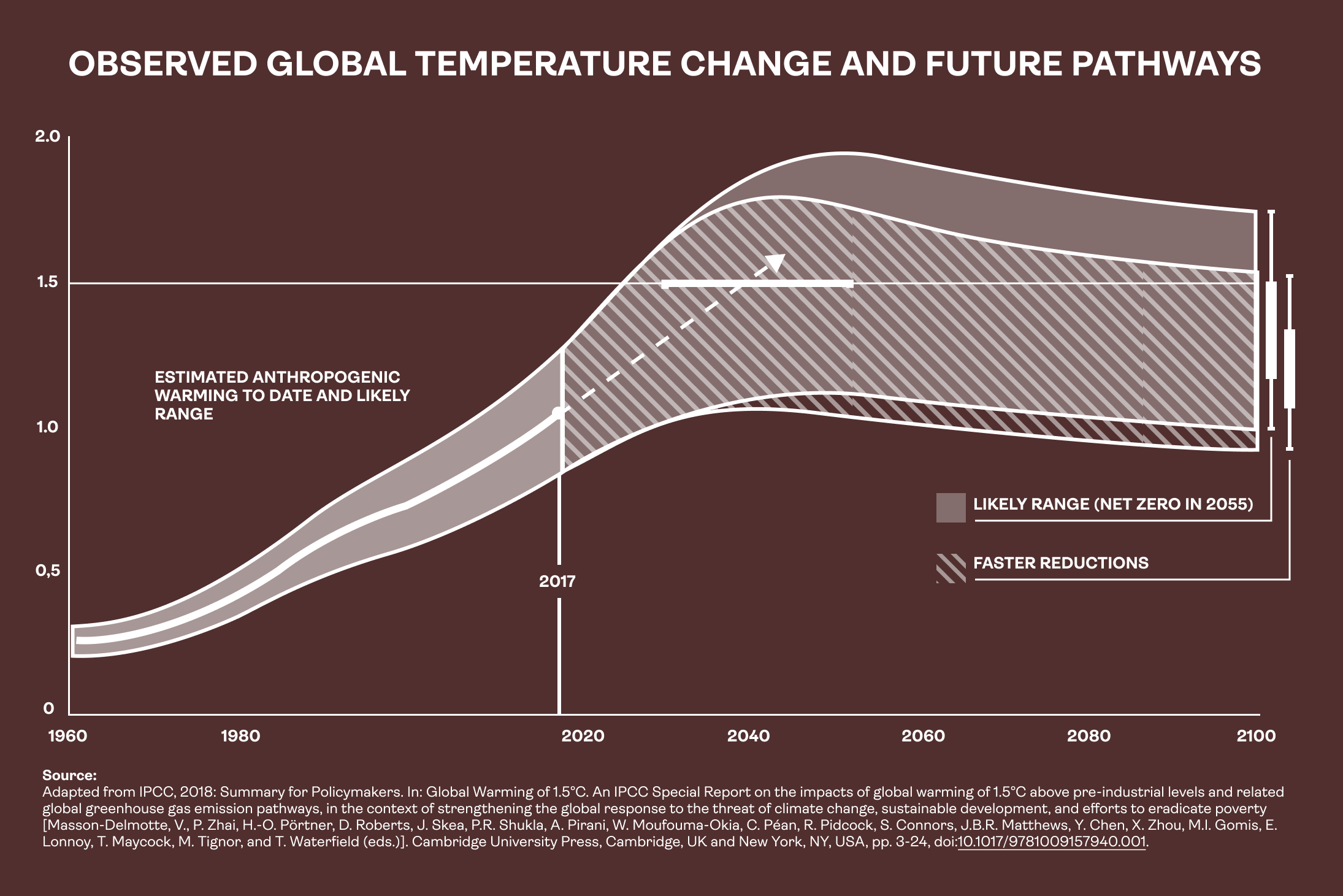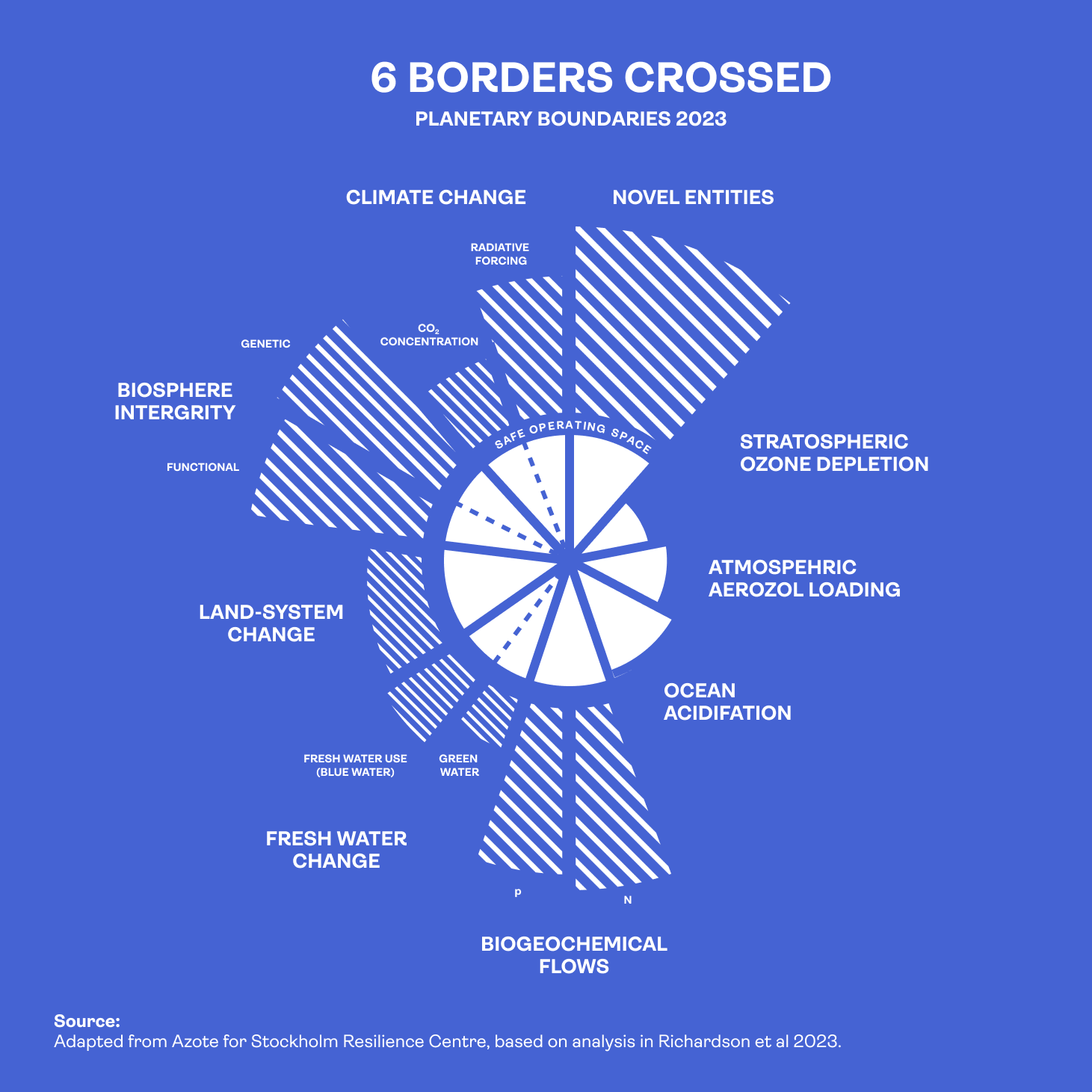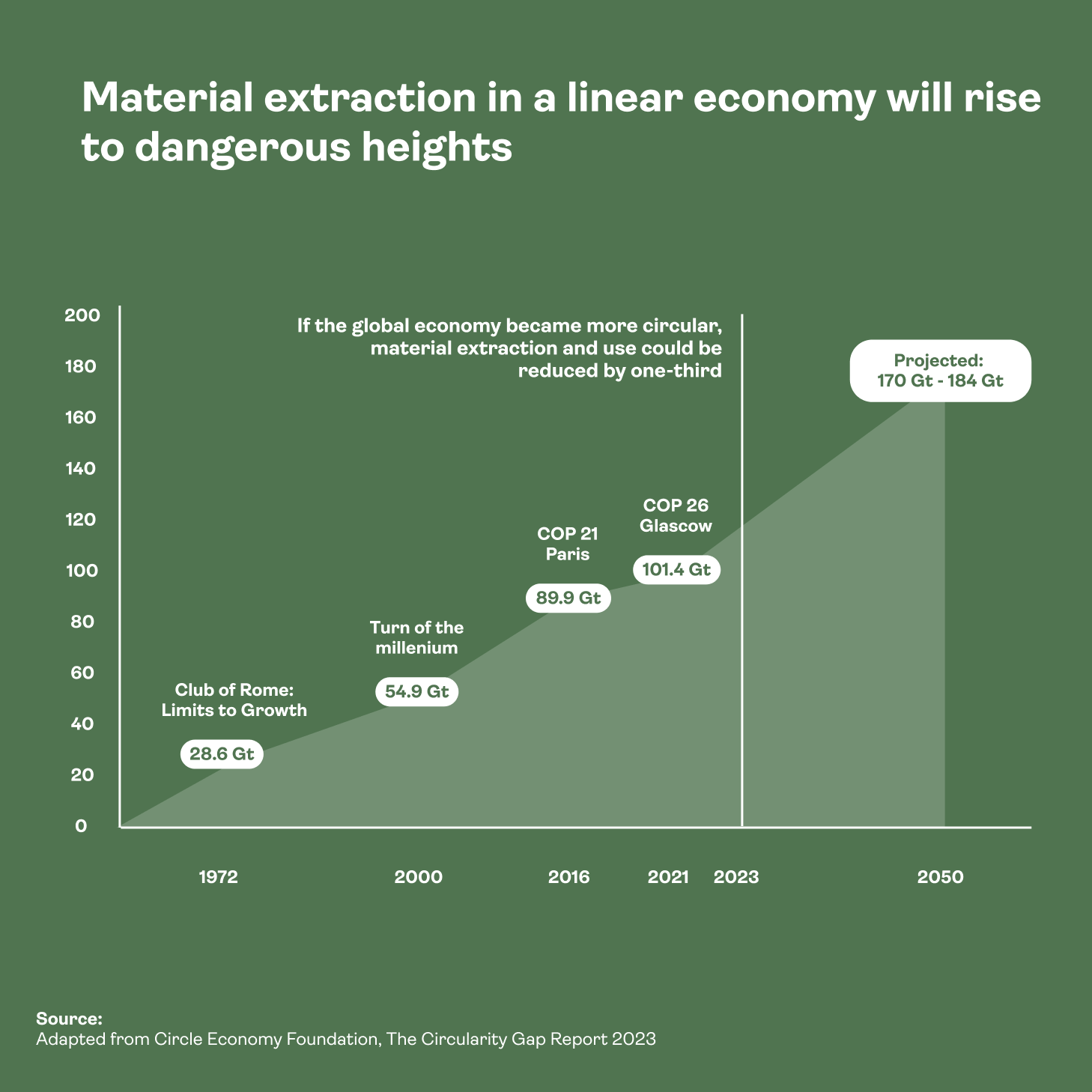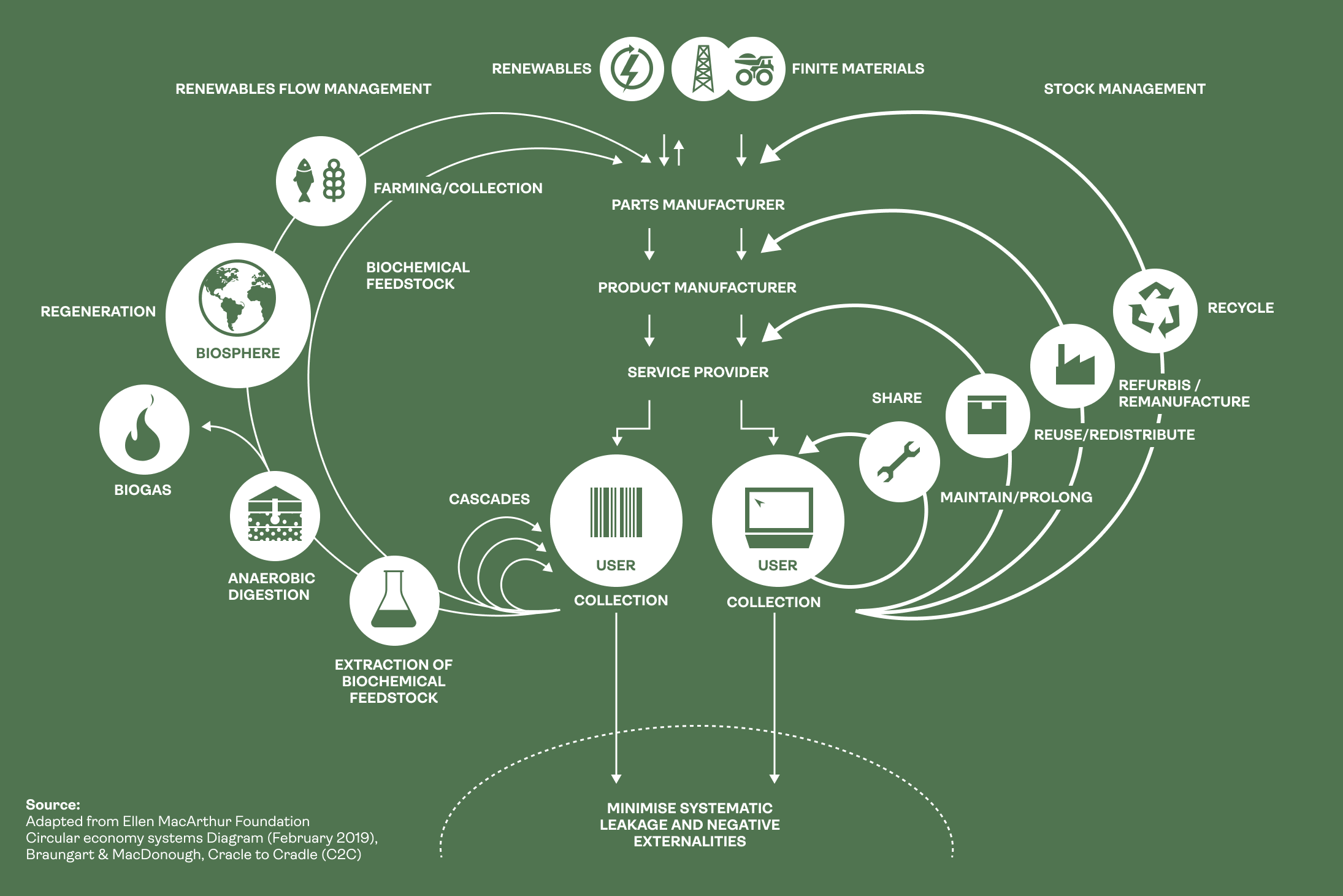20 October 2023
The Circular Economy: A Business Imperative for a Sustainable Future
Juha Johansson
Sustainability expert
20 October 2023
The Circular Economy: A Business Imperative for a Sustainable Future
Juha Johansson
Sustainability expert
In the face of growing climate concerns, it's more important than ever for businesses to adopt a circular approach to their operations. But what exactly does circularity mean, and why should it matter to your business? In this blog post, we'll break it down, and explore the opportunity and how your business can lead the way in transforming our system through regenerative practices.
The Urgency from a Climate Perspective
The urgency of embracing circularity becomes crystal clear when we consider the accelerating climate crisis. (1) Our linear "take-make-waste" economy, where we extract resources, produce goods, and throw them away after use, is putting a tremendous strain on the environment. The emission of greenhouse gases and excessive resource consumption are driving climate change, increasingly threatening our planet's stability.

The time is now. The extent to which current and future generations experience a hotter and different world depends on choices now and in the near term. (2)
To limit global warming and its consequences on people and nature, we need to shift from this linear model to a circular one, where waste and pollution are minimized, and resources are used more efficiently. By adopting a circular approach, we can significantly reduce our environmental impact and help mitigate the harmful effects on people.

In addition to climate change, we are crossing many other planetary boundaries as a result of our actions. (3) Circularity not only helps us to mitigate our climate impact but also biodiversity loss when done right. (4)
Sources:
1. IPCC, 2018: Summary for Policymakers. In: Global Warming of 1.5°C. An IPCC Special Report on the impacts of global warming of 1.5°C above pre-industrial levels and related global greenhouse gas emission pathways, in the context of strengthening the global response to the threat of climate change, sustainable development, and efforts to eradicate poverty [Masson-Delmotte, V., P. Zhai, H.-O. Pörtner, D. Roberts, J. Skea, P.R. Shukla, A. Pirani, W. Moufouma-Okia, C. Péan, R. Pidcock, S. Connors, J.B.R. Matthews, Y. Chen, X. Zhou, M.I. Gomis, E. Lonnoy, T. Maycock, M. Tignor, and T. Waterfield (eds.)]. Cambridge University Press, Cambridge, UK and New York, NY, USA, pp. 3-24, doi:10.1017/9781009157940.001.
2. IPCC, 2023. AR 6 Synthesis Report: Climate Change 2023. Accessed 20.10.2023 https://www.ipcc.ch/report/ar6/syr/figures/figure-spm-1
3. Stockholm Resilience Centre, 2023. Planetary Boundaries. Accessed 20.10.2023 https://www.stockholmresilience.org/research/planetary-boundaries.html
4. European Environment Agency, 2023. The benefits to biodiversity of a strong circular economy. Accessed 20.10.2023 https://www.eea.europa.eu/publications/the-benefits-to-biodiversity
The Opportunity and Demand from a Business Perspective
But it's not just about securing the future of the planet and our existence; it's also about securing your business's future. The future is for companies and actors, that pave our way to regenerative sustainable growth. Consumers and investors are increasingly favoring companies that demonstrate commitment to sustainability (5,6). By going circular, you're tapping into a growing market demand for regenerative products and practices. The earlier to leverage an opportunity, the better you’ll succeed.
Moreover, embracing circularity can lead to cost savings through resource efficiency, reduced waste, and increased lifecycle value. Reusing and recycling materials can cut production costs and decrease your reliance on scarce resources, making your business more resilient in the long run.

Business as usual has no future. Material extraction in a linear economy will rise to dangerous heights. (7) The Circularity Gap Report estimates that we're only utilizing 7.2% of the world's resources in a circular manner. In other words, over 90% of resources are being lost in our linear systems, creating environmental stress and resource scarcity. This gap highlights the enormous potential for circular solutions and the urgent need for businesses to transition from a linear to a circular model. (7) The earlier you realize this opportunity the better you’ll succeed in the future.
Sources:
5. McKinsey & Company, 2023. Consumers care about sustainability—and back it up with their wallets, Accessed 20.10.2023. https://www.mckinsey.com/industries/consumer-packaged-goods/our-insights/consumers-care-about-sustainability-and-back-it-up-with-their-wallets.
6. Mckinsey & Company, 2023. Investors want to hear from companies about the value of sustainability, Accessed 20.10.2023 https://www.mckinsey.com/capabilities/strategy-and-corporate-finance/our-insights/investors-want-to-hear-from-companies-about-the-value-of-sustainability
7. CGRi, 2023. The Circularity Gap Report 2023. Accessed 20.10.2023 https://www.circularity-gap.world/2023
Principles of Circular Economy
Now, let's get into the core principles of the circular economy:
Eliminate Waste and Pollution: The first principle is all about reducing waste and minimizing pollution. This means rethinking product design, manufacturing processes, and supply chains to create products that are more durable, repairable, and recyclable.
Circulate Products and Materials: Circular businesses aim to keep products and materials in use at their highest value for as long as possible. This involves reusing, refurbishing, remanufacturing, and recycling to extend product life cycles.
Regenerate Nature: Circular practices should be environmentally restorative. This means finding ways to give back to nature, such as reforestation projects or using renewable energy sources in production.
Ensure a Just Transition: Transitioning to a circular economy should be fair and inclusive. It's essential to consider the social and economic impacts on workers and communities, ensuring that no one is left behind.

The butterfly diagram illustrates the continuous flows in a circular economy. (8) Every missing flow and interaction in your value chain presents a business opportunity for someone to leverage and secure their place in the regenerative future of business.
Sources:
8. Ellen MacArthur Foundation, 2019. The butterfly diagram: visualising the circular economy. Accessed 20.10.2023 https://ellenmacarthurfoundation.org/circular-economy-diagram
Transforming Our System Through Regenerative Business
To transform our system and embrace circularity, businesses must take the lead. Here’s how you can lead the way:
Start by assessing your current operations and supply chains. Identify areas where you can reduce waste, increase recycling, improve resource efficiency, and extend product lifecycle.
Invest in research and development to create products designed for longevity and easy disassembly, promoting reuse and recycling. Collaborate with partners and stakeholders who share your vision of a circular economy.
Consider adopting a "cradle to cradle" mindset, where every product is designed to have a continuous life cycle, minimizing waste and maximizing resource value.
In conclusion, circularity is not just a buzzword; it's a necessity for our planet's survival and a tremendous opportunity for your business to thrive. Start your journey towards a circular economy today and be part of the solution. By embracing the principles of circularity, your business can not only reduce its environmental footprint but also meet the increasing demand for sustainable and eco-friendly products and services. Moreover, you can become a regenerative force that helps heal our planet and create a more equitable and prosperous future. Start your journey towards a circular economy today and be part of the solution.
The best way to predict the future is to make it happen. Together, we can create a sustainable and regenerative future.
Let's talk about how to make this happen
We help you set the foundation and grow into becoming true business leaders in vast sustainability transformations.
Mia Folkesson
Managing Partner
mia@impaktly.com
Let's talk about how to make this happen
We help you set the foundation and grow into becoming true business leaders in vast sustainability transformations.
Mia Folkesson
Managing Partner
mia@impaktly.com